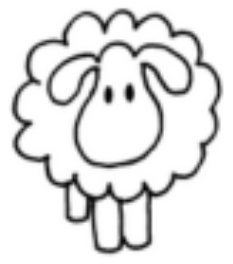Knitting is like magic with yarn and needles. And the knit stitch? It’s the foundation of that magic. Whether crafting a cozy scarf or a chunky blanket, it all starts here.
First off, you’ll need some tools: knitting needles and yarn. Needles come in different sizes, from thin and pointy to thick and chunky. For beginners, medium-sized needles made of bamboo or wood are perfect since they’re easier to handle. As for yarn, stick to something smooth and light-colored, so you can see your stitches clearly.
When you look at any knitting pattern, you’ll see a bunch of abbreviations and terms. Here are a few must-know basics: ‘K’ means knit, ‘P’ means purl, CO is to cast on, and BO is to bind off. Getting familiar with these will save you tons of head-scratching.
Alright, let’s break it down. To create a knit stitch, hold the needle with the cast-on stitches in your left hand. Insert the right needle into the first stitch from front to back. Wrap the yarn around the right needle, pull it through, and slide the old stitch off the left needle. Boom! That’s a knit stitch, my friend.
If there’s a hiccup, don’t panic. Dropped stitches and twisted yarn are common hiccups. For dropped stitches, use a crochet hook to pull the loop back onto the needle. To avoid twisted yarn, make sure you’re wrapping the yarn the same way every time. Practice makes perfect, and soon you’ll be knitting like a pro.
Perfecting Your Technique: Tips and Tricks for Mastery
Getting comfortable with tension is key. It’s the grip and consistency with which you hold and maneuver your yarn. Too tight, and your stitches will be hard to work; too loose, and they’ll look messy. Aim for a Goldilocks zone, where everything feels just right.
Finding your rhythm can boost both speed and efficiency. Everyone knits at their own pace, but practicing a steady flow will help. Try setting aside dedicated time each day to knit; muscle memory and speed will naturally improve over time.
Variations of the knit stitch, like garter and stockinette stitches, add texture and variety to projects. The garter stitch uses only knit stitches, while the stockinette alternates between knit and purl. Playing around with these can create different looks and feels in your knitting.
Seamlessly transitioning between knit stitches and other stitches like purling can refine your skills. If you’re already comfortable with the knit stitch, try knitting a row and then purling the next to see how your fabric changes. This alternating technique is fundamental in countless patterns.
Knitting is also a chance for mindfulness. Keep calm and patient, especially when things go wrong. Taking deep breaths, enjoying the process and not rushing will lead to better results. Remember, knitting is not just about the end product, but also about the peace it brings during the process.
Incorporating the Knit Stitch in Projects: Creative Applications
Let’s put that knit stitch to use! Starting with simple projects can boost your confidence and refine your skills. Scarves are a classic beginner project – just cast on, knit every row, and you have a warm and rewarding result. Dishcloths are another great beginner project, practical and speedy to complete.
As you get more comfortable, trying more complex designs incorporating knit stitches into patterns like ribbing or cables adds a new dimension to your knitting. Ribbing, which alternates between knit and purl stitches in the same row, is perfect for stretchy cuffs and edges. Cables, on the other hand, involve crossing groups of stitches, creating intricate, woven textures perfect for sweaters and throws.
Combining the knit stitch with other techniques is where things get fun. Colorwork, lace, and mosaics can all start with the humble knit stitch. Imagine creating a colorful fair isle hat or a delicate lace shawl – it’s all within reach! Learning to read charts and patterns will become crucial as you tackle these more advanced projects.
Understanding gauge is crucial when you’re moving from practice pieces to fitted garments. Gauge tells you how many stitches and rows fit into a certain measurement. It ensures that your project turns out the right size. Always swatch (knit a small sample) and measure your gauge before starting a big project.
Lastly, knitting is more enjoyable with others. Joining knitting communities, whether local groups, online forums, or social media communities, provides support, inspiration, and new ideas. Engaging with other knitters offers constant learning opportunities and can be incredibly motivating.
